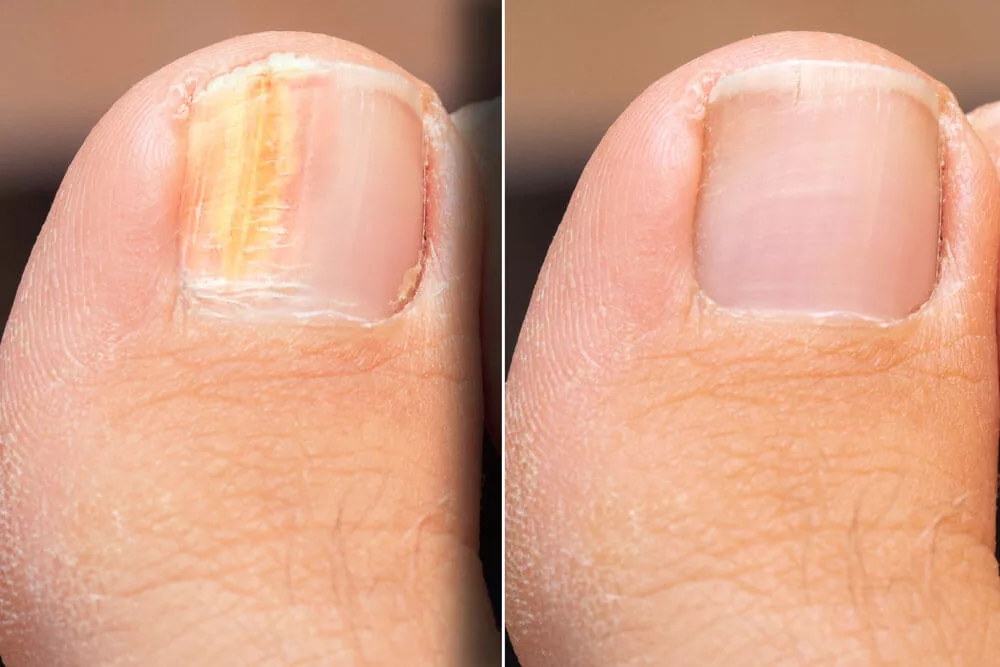Laser Toenail Fungus Therapy
Advance Laser Therapy for Toenail Fungus – Treatment for toenail fungus performed by our doctors
Laser Toenail Fungus Therapy treats nail infections that are usually caused by fungi (including yeast and molds) The most common fungi that cause nail infection in humans and animals are Trichophyton rubrum, T. mentagrophyte, and Candida albicans. These fungi can live in the layer of dead skin around your nails, in the space under your nail, and in the nail itself. This can cause your nails to be discolored, thickened, brittle, and ‘crumbly’. In some patients, it can interfere with wearing shoes and/or can cause pain when walking.

Treatments for infected nails are:
- Oral drugs – Oral drugs require you to have regular blood tests to monitor your liver function as this medication can be harmful to your liver.
- Topical drugs - Topical drugs are rarely effective as they have difficulty penetrating the toenail in a high enough concentration to kill the fungus.
- Laser treatment- Laser treatment heats up the tissue beneath the toenail to a temperature high enough that fungus can no longer survive.
How does laser treatment work:
PinPointe laser is one of only two lasers the FDA has cleared to treat fungal toe nails. The highest level of clinical data available for the treatment of fungal nails is from treatment performed by the PinPointe laser. Be sure to ask about available clinical data before you make a decision.
- Fast- 30 minutes
- Effective- 1 treatment
- Painless- no anesthesia needed.
- Zero downtime. Paint your toenails the same day!
- Resume exercise after treatment
To achieve the highest results, we at Foot and Ankle Center of Arizona adopted a treatment plan above and beyond FDA’s recommendations.
Our team of physicians treats all 10 toenails regardless of how many nails are infected. A second treatment, within 3 months is included in our treatment plan if it is necessary.
Treatment of all toenails usually takes about 30 minutes. Patients may feel warmth during treatment. 80% of patients see improved appearance of their toenails within the first treatment.
Laser treatments are not covered by health insurance or Medicare. Individual HSA plans may cover this treatment. Payments are accepted by cash, credit card or by Care Credit for patient’s convenience.
Please note: we have a 24 hour cancellation policy with our appointments.
We offer a limited number of consultation appointments on Thursdays only. You will meet one of our doctors to learn more about the procedure and if you are a candidate for treatment.
Call us for a free consultation at 480-342-9999